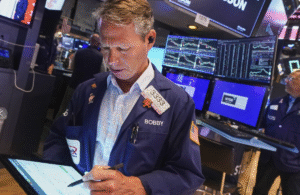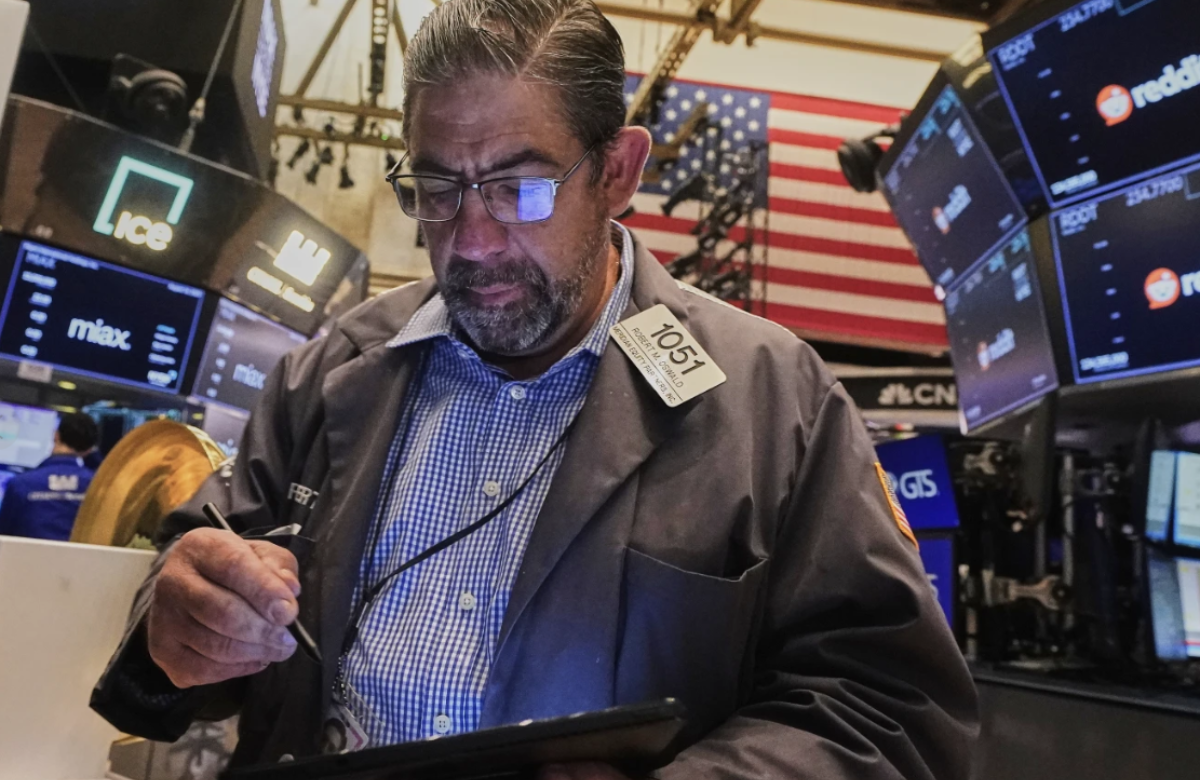A strong rally in global stock markets that started in Asia on Thursday showed signs of slowing down amid ongoing uncertainty following a U.S. court ruling blocking many of President Donald Trump’s extensive tariffs.
In the U.S., the S&P 500 was up 0.4% in morning trading but had lost more than half of an earlier gain. The Dow Jones Industrial Average rose 74 points (0.2%) by 10:30 a.m. Eastern time, while the Nasdaq composite gained 0.6%.
Earlier, markets in Tokyo and Seoul had surged nearly 2% as investors reacted to the U.S. Court of International Trade’s decision in New York. The court ruled that the 1977 International Emergency Economic Powers Act, which Trump had cited to justify the sweeping tariff increases on imports, does not grant the authority to impose such tariffs.
This ruling sparked optimism among investors that Trump’s tariffs, which threatened to disrupt global trade and push consumer prices higher amid inflation, might be curtailed. Trump has maintained that tariffs are necessary to bring manufacturing jobs back to the U.S., despite the potential short-term pain for American households.
However, the White House quickly filed an appeal, leaving the future of the tariff dispute uncertain. The court’s decision affects only some of Trump’s tariffs and does not cover levies on foreign steel, aluminum, and automobiles, which were imposed under a different law.
Experts like Ulrike Hoffmann-Burchardi, Chief Investment Officer for Global Equities at UBS Global Wealth Management, note that Trump still retains the ability to impose significant tariffs through other legal avenues in the long term.
As trading moved from Asia to Europe and then the U.S., the initial enthusiasm in the markets faded somewhat, although the court ruling was broadly viewed as a positive development. Brian Jacobsen, chief economist at Annex Wealth Management, said that the market now faces “a better type of uncertainty” compared to the heightened tensions since Trump announced the tariffs earlier in April.
The S&P 500 has recovered to within 3.8% of its all-time high reached earlier this year, after previously dropping about 20%.
On Wall Street, technology stocks were strong performers, led by Nvidia. The chipmaker once again surpassed analysts’ expectations for quarterly profit and revenue. Nvidia’s 4.3% increase was a major driver behind the S&P 500’s gains, benefiting from the growing excitement around artificial intelligence technology.
Similarly, C3.ai, an AI software company, jumped 29.4% after reporting better-than-expected profits and announcing an increased contract value with the U.S. Air Force. The company’s quarterly revenue reached $108.7 million.
E.l.f. Beauty also saw a significant rise of 24.2%, following a stronger quarterly profit report. The company announced its acquisition of Hailey Bieber’s skincare brand Rhode for $1 billion. Bieber, a well-known model and spouse of singer Justin Bieber, will take on key creative and strategic roles in the combined business. Rhode generated $212 million in net sales in the past year.
These gains helped offset a decline in Best Buy’s stock, which fell 8.5% despite reporting stronger-than-expected profits. The electronics retailer missed revenue forecasts and lowered its full-year outlook, citing the impact of tariffs and stable consumer behavior trends. Best Buy’s CFO, Matt Bilunas, mentioned that their forecasts assume tariffs remain unchanged for the year.
In the bond market, Treasury yields eased slightly amid mixed economic data. One report suggested the U.S. economy contracted less than previously estimated in the first quarter, while another showed a slight uptick in weekly jobless claims.
The 10-year Treasury yield dropped to 4.45% from 4.47%, and the two-year yield, which closely tracks Federal Reserve rate expectations, fell to 3.95% from 3.96%.
Internationally, Japan’s Nikkei 225 surged 1.9%, leading gains in Asia, with Hong Kong and Shanghai also posting positive increases of 1.4% and 0.7%, respectively. South Korea’s Kospi climbed 1.9% after the Bank of Korea cut interest rates to support the economy.
European markets showed more subdued movements, with France’s CAC 40 inching up 0.1% and Germany’s DAX slipping 0.4% after initially rising.














